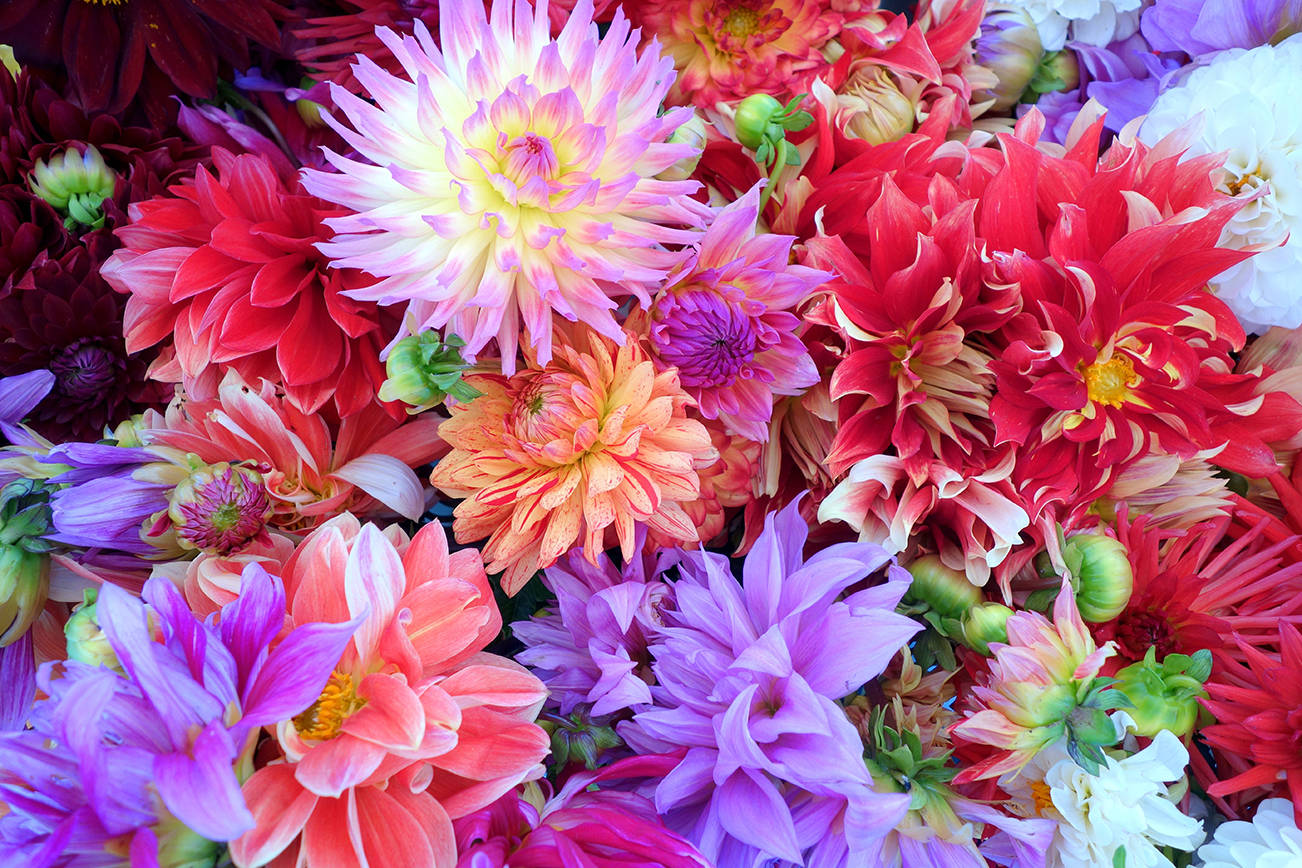By Dolores Cavanah
WSU Master Gardener
In an August article, I described the “A” (agapanthus) and “B” (boxwood) from my list of favorite plants I grow here at Schafer Meadows. Continuing on, here are “C” and “D.”
C is for Camellia
Camellia is a flowering, shade-loving evergreen shrub or small tree available in an incredible range of flowers in many shades of pink, white and red — some single, some double-blooming up to 5 inches across.
Camellia is one of the first plants to herald the onset of spring. There are more than 3,000 named varieties; my preference is Camellia japonica.
Highly recommended is Camellia sasanqua. However, it does not do well in my garden. About seven years ago I purchased three very expensive Yuletide sasanqua camellias with a few blooms. They were featured at the Northwest Flower and Garden Show in February, and I thought they would be perfect with my bright yellow Arnold Promise witch hazel trees, along with a coppery orange Jellena and a Diane, which is a vibrant red. These are all early bloomers.
Unhappily, these shrubs have really never bloomed, though I have seen a few tiny flowers on one of the plants (using a magnifying glass). Now I have to figure out where to move them and find something else to fill their spots.
But Camellia japonica is still one of my favorites. My collection of this camellia was planted about 25 years ago and has been a joy to me in early spring with a profusion of blooms. In my experience, they can be pruned at any time of the year after bloom if they get too big, without damage to the following spring bloom.
They require little care. They like partial shade, a little fertilizer for acid-loving plants and seem to be drought-tolerant, even after the last two summers of blistering heat where some didn’t get much water, if any.
Because of their growth habit, Camellia japonica can give evergreen structure to the garden. They are deer-resistant and produce beautiful flowers.
D is for Dahlia
Dahlias are one of my favorite plants because of the spectacular colors that enliven the garden in mid- to late summer. With hybridizing over the years, a tremendous diversification is available in colors, with flower size from 2 inches to a foot across, and types in every conceivable color except for blue — for now.
Plants can be up to 7 feet tall and grow best in moderately well-drained soil enriched with organic matter, such as compost. Most dahlias are started from tubers, some from seed. There are myriad bloom forms — to name a few, the dinner plate, pompom, cactus, waterlily, peony, anemone, dwarf, single and double.
Dahlias make excellent cut flowers. To make the blooms last longer, immerse stems in 2 to 4 inches of very hot water immediately after cutting, and leave until the water is cool.
It is suggested in our Northwest climate to lift the tubers in the fall, removing loose soil and storing them in a cool, dark place in sawdust or newspaper until replanting in spring. Early on, I did that with great success. Later, I left them to overwinter in the garden. For several years they came back up in the spring. However, a couple of years ago when it was extremely cold, I lost them all and had to start over.
The taller forms like to be staked. Deer don’t like dahlias, but slugs just love them. This plant is native to Mexico and Guatemala. It definitely offers a big bang for the buck!
This article, by Master Gardener Dolores Cavanah, is part of an occasional series in which she describes the plants she most admires at her expansive garden at Schafer Meadows, east of Montesano. To learn more about the WSU Master Gardener Program in Grays Harbor and Pacific counties, visit PNWMG.org.


